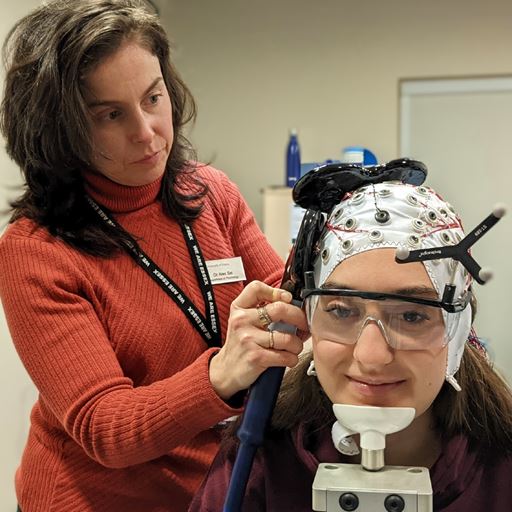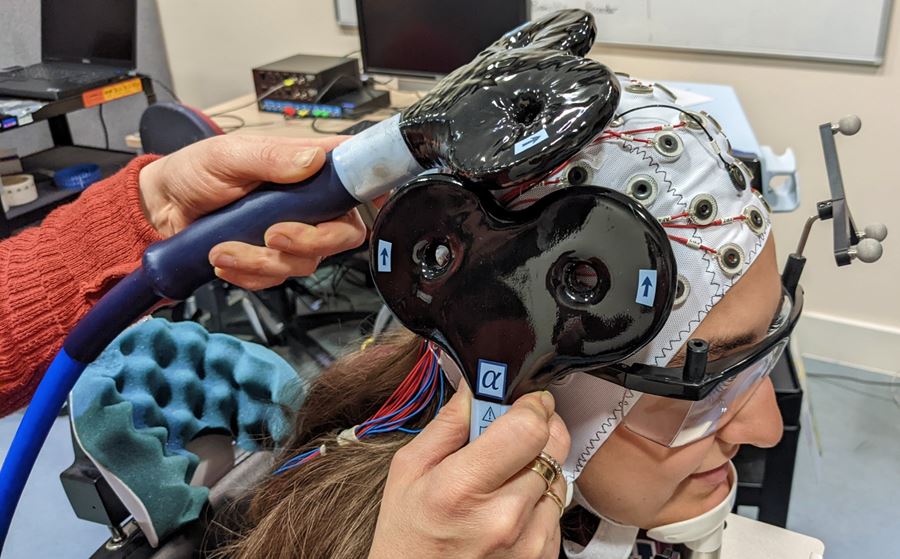'Building broadband in the brain' could beat strokes
-
Date
Mon 7 Mar 22

Strokes and dementia could be treated by “building broadband in the brain” thanks to a ground-breaking discovery by a University of Essex neuroscientist.

A study by Dr Alex Sel has revealed innovative brain stimulation can boost neural connectivity and strengthen communication.
The lecturer in the Department of Psychology has proved a decades-old theory for the first-time by using magnets to confirm different regions are coupled and connected.
Incredibly just 15 minutes of magnetic stimulation on the brain’s movement centres can increase connectivity between them for up to three hours.
Using magnets to target this area increases network connection, and more information can speed between regions.
It is hoped this will help combat conditions that impact neural plasticity – where the brain changes and grows.
This could see the damage caused by some degenerative illnesses halted, including motor neuron disease.
Now Dr Sel hopes to explore the technology’s real-world uses.
Dr Sel said: “This study is a springboard for future research that we will use to investigate brain connectivity in motor areas and how this technology can be used on other parts of the brain.
“This can really pave the way for future treatments and could be a new approach to treating illnesses.
“This research has the potential to form the basis for a whole series of novel brain stimulation approaches.
“It is early days, but I am very excited by its potential.”
Dr Sel and her colleagues used the magnets on the pre-motor cortex and primary motor cortex as part of the study.
The areas are on the same hemisphere of the brain and are inches apart.
After being targeted by ‘transcranial magnetic stimulation’ volunteers were then studied with specialist equipment often called electroencephalogram showed an increase in electrical activity between the areas.
In total, more than 100 people were probed and the treatment saw more than 90 per cent respond positively
Dr Sel said: “Although this might seem complicated it is best to think of this treatment as building broadband in the brain.
“The stimulation effectively increases the bandwidth between the two regions and information can move quickly between them.
“At this stage, we can’t change the size of the connections, but we can make the networks more effective.
“It is a very exciting discovery and one I hope that can help the people who really need it.”
The peer-reviewed paper was published in Proceedings of the National Academy of Sciences.
.jpg?mh=500&mw=500&hash=6568B6C9CCF5290A596BEF6678B6AD0E)



